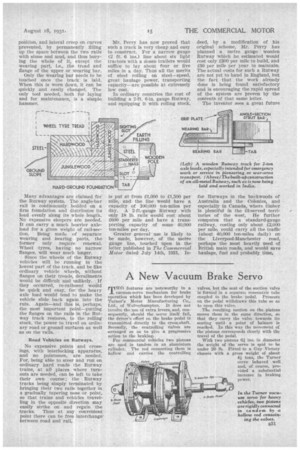A New Vacuum Brake Servo
Page 45

If you've noticed an error in this article please click here to report it so we can fix it.
TWO features are noteworthy in a vacuum-servo mechanism for brake operation which has been developed by Turner's Motor Manufacturing Co„ Ltd., of WOlverhampton. It does not involve the .use of extra levers,, and, consequently, should the servo itself fail, the driver's effort on the brake pedal is transmitted directly to the cross:shaft. Secondly, the controlling valves are -arranged so as to give a progressive action to the braking:
For commercial vehicles two pistons are used. in tandem in an aluminium cylinder. The rod connecting them is hollow and carries the controlling
valves, but the seat of the suction Valve is,fornied in a separate concentric tube coupled to the brake pedal. Pressure on the pedal withdraws this tube so as to open this valve.
The .resulting• suction on the pistons moves them in the same direction, so that they carry the valve towards its seating until a point of balance is reached. In this way the movement of the pistons corresponds closely with the travel of the pedal.
With two pistons 61 ins, in diameter the weight of the servo is said to he under 20 lb. Fitted to a Guy Victory chassis with a gross weight of about 4-i tons' the Turner servo behaved well and, of course, provided a substantial increase ill braking power.




























































































